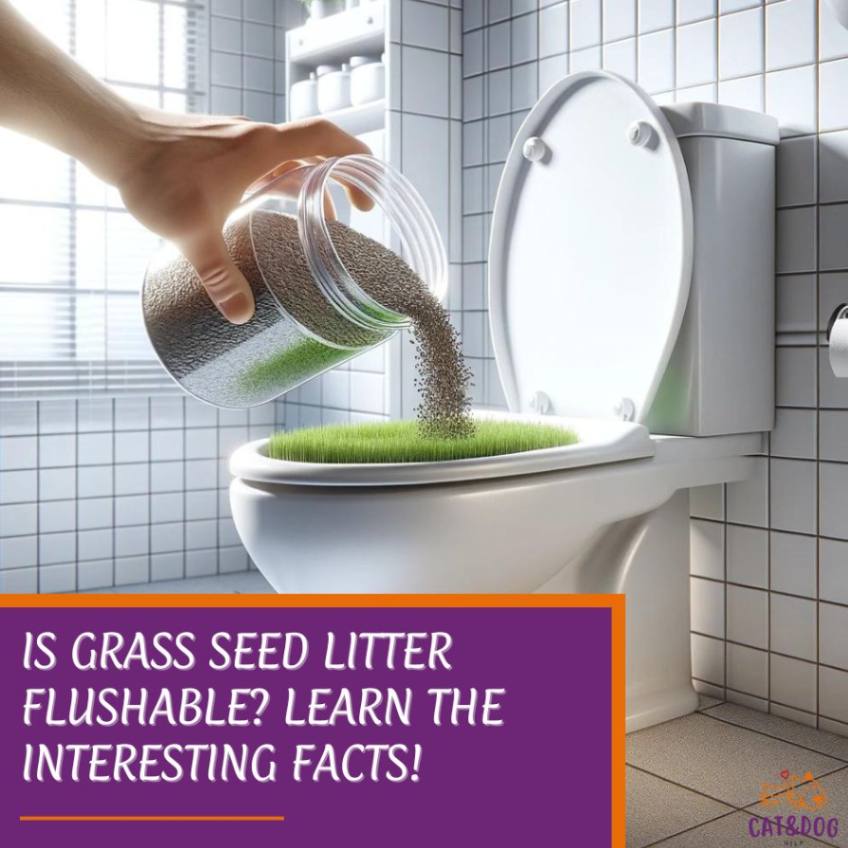Have you ever wondered about the flushability of that convenient grass seed litter? It’s becoming a popular choice among eco-conscious pet owners as an alternative to the traditional clay.
It’s understandable why you’d consider this green option, but hang on—there’s more to consider than just its plant-based charm. (1)
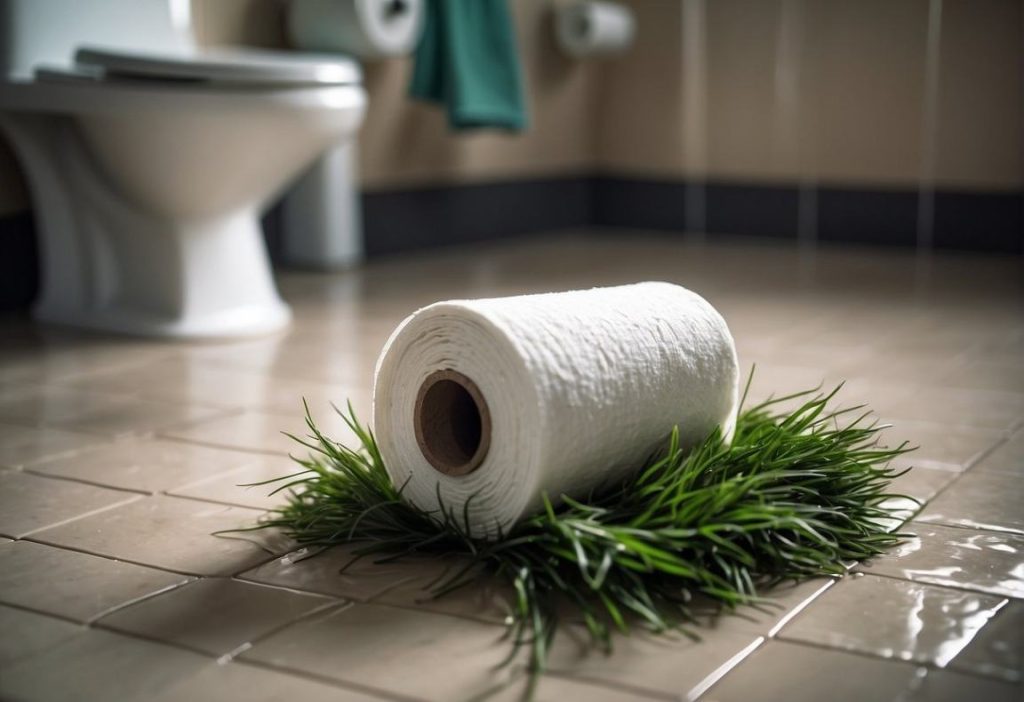
Knowing how to properly dispose of grass seed litter isn’t just about keeping your plumbing in good shape—it also has implications for the environment and local health and safety regulations.
That’s right, the way you get rid of used litter plays a significant role in the bigger picture.
There’s also the legal side: depending on where you live, flushing the wrong thing down the drain could get you in a bit of hot water!
So, is grass seed litter flushable? Let’s explore what you should know before you make your next move. (2)
Key Takeaways
- Grass seed litter is an eco-friendly alternative to clay, but its flushability is in question. (3)
- Proper disposal of litter is vital for environmental health and in accordance with legal regulations.
- Flushing grass seed litter could lead to plumbing and ecological issues.
Is Grass Seed Litter Flushable?
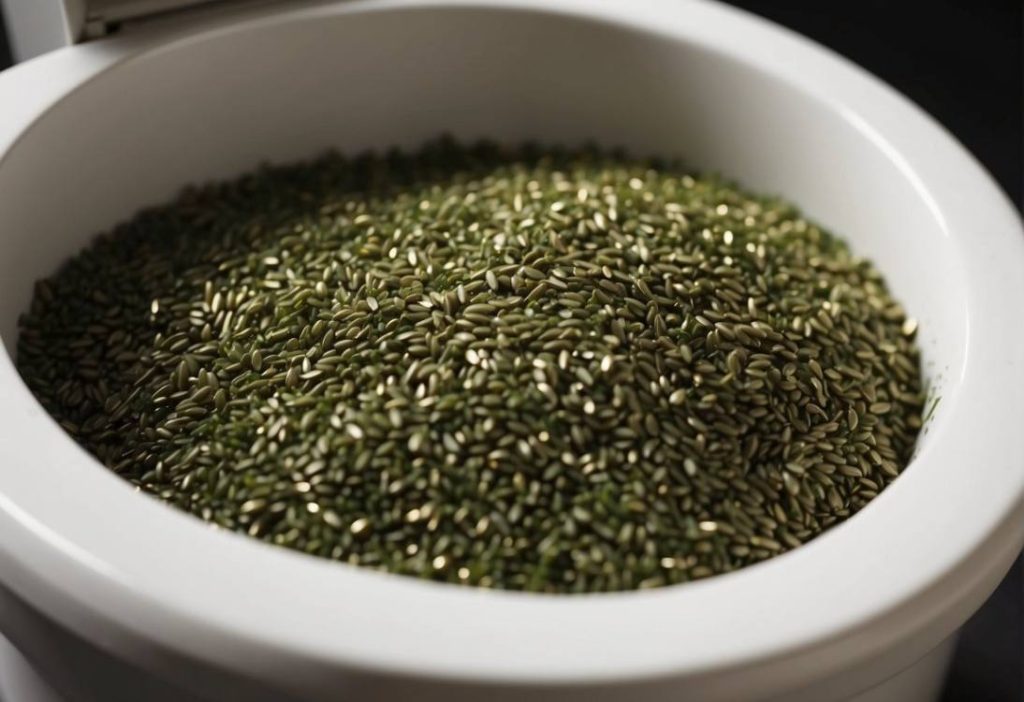
Manufacturer Claims
Ever wondered which grass seed litters claim to be flushable? Have a peek at these:
- SmartCat: Boasts being eco-friendly. Pro: Biodegradable. Con: Pricier than peers.
- So Phresh: Touts flushable convenience. Pro: Lightweight. Con: May not clump well.
Real-World Experiences
What do folks like you say about flushing grass seed litter?
- “Flushing my SmartCat was a breeze, no plumbing hiccups!”
- Conversely, a user with old pipes regretted flushing So Phresh, leading to a costly plumber visit.
Additionally, plumbers lean towards caution, suggesting not to flush even “flushable” litters to avoid potential blockages. (4)
State Regulations
It’s no secret that states like California frown upon flushing litter due to environmental concerns. They have strict laws against it, with hefty fines to match.
Don’t get caught off guard—check your local regulations.
Potential Fines and Penalties
Getting slapped with a fine for flushing cat litter? Ouch!
The damage can range from a few hundred bucks to thousands, not to mention the guilt of harming our fluffy friends’ habitats.
Always consider the legal and environmental impacts before a flush decision.
Health and Safety Concerns
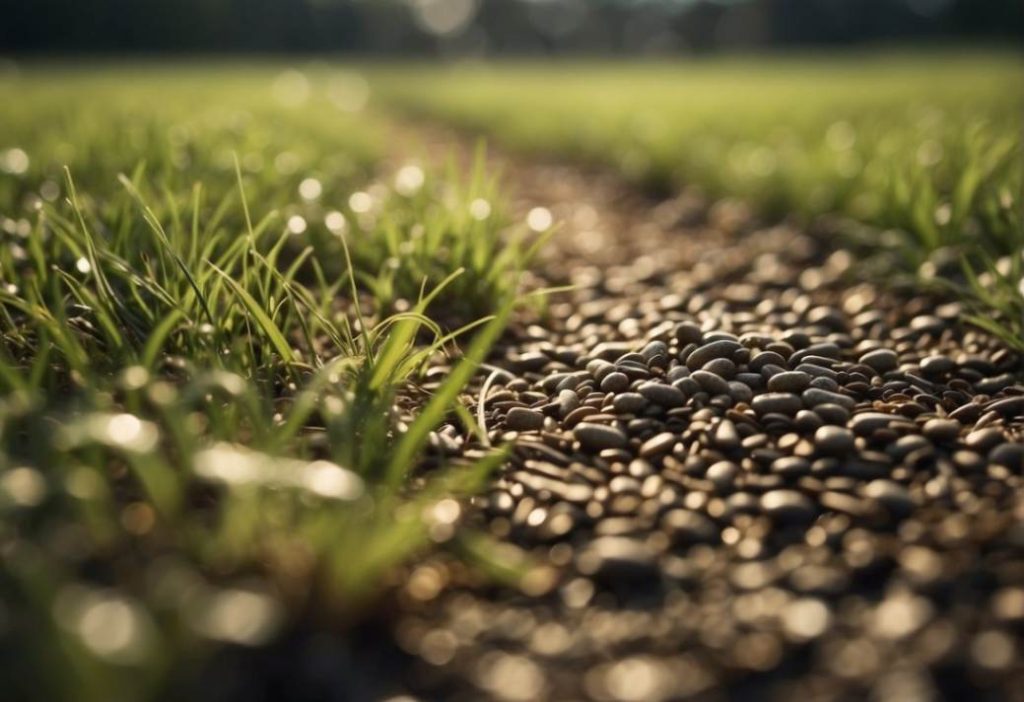
Risks to Plumbing:
- Potential for Clogs: Unlike toilet paper, grass seed litter doesn’t dissolve quickly. This means it can easily gather in your pipes, causing stubborn blockages. (5)
Effects on Septic Systems:
- Septic professionals warn that grass seed litter accumulates in septic tanks, straining the system and sometimes leading to costly repairs. (6)
Environmental Health Risks:
- Toxoplasma Gondii: Flushing cat waste can introduce this harmful parasite into water systems, poorly affecting wildlife and potentially contaminating water sources. (7)
Impact on Wildlife and Water Quality:
- Water Treatment: Traditional facilities aren’t geared to treat the pathogens found in grass seed litter, posing a risk when water is returned to natural habitats.
- Wildlife: Case studies highlight that substances from flushed litter can be toxic to aquatic life, upsetting ecosystems.
In short (but without oversimplifying!), when you’re considering flushing grass seed litter, keep in mind that the action may have repercussions that extend far into your plumbing and even into the local environment.
It’s always better to dispose of such waste responsibly—your pipes and the wildlife will thank you!
Practical Disposal Methods
Bagging and Trash Disposal
Grass seed litter can create quite the mess, can’t it? But tossing it right into the trash bin as is? That’s a no-no.
Instead, you’ll want to double-bag that litter. Why? To trap those pesky odors and prevent any unwanted spills. Here’s a quick walk-through:
- Scoop out the litter into a biodegradable bag.
- Seal it tight—consider a knot or a twist tie.
- Slip that first bag into a second one for good measure.
- Dispose of it in your outside trash bin.
Composting (where applicable)
Now, if you’re leaning greener, composting might be your jam. But it’s not as simple as tossing it in the bin and calling it a day.
Check your local guidelines first, as some places might give grass seed litter the thumbs up, while others say no-go. If you’ve got the green light, remember:
- Grass seed litter needs to be pesticide-free.
- It should be added in moderate amounts to maintain a balanced compost mix.
Alternatives to Flushing
Sustainable Litter Options
Are you on the lookout for something planet-friendlier than grass seed litter? Let’s weigh up some alternatives:
- Wood: It’s super absorbent and biodegradable. But, it might not clump as well.
- Paper: Phenomenal for sensitive paws, but it might need more frequent changing.
- Corn: Clumps well and it’s flushable in some areas, but do verify local plumbing codes!
Best Practices for Cat Owners
Want to make the most of whatever litter you choose? Follow these daily maintenance tips:
- Remove solids regularly to keep things fresh.
- Stir the litter to even out moisture.
- Go for deeper litter levels to extend its lifespan—about 3-4 inches should do the trick.
Understanding Grass Seed Litter
Composition and Ingredients
- Natural Grass Seeds: That’s right, you’re not bringing anything alien into your home with this type of litter – just pure, natural seeds.
- Biodegradable: Mother Nature gives her nod of approval as this litter can be broken down naturally.
- Renewable: Grass seeds grow aplenty, so there’s no worry about running low on this eco-friendly choice.
Benefits of Grass Seed Litter
You’re making a green choice that’s friendly to the planet, but what’s in it for you and your furry friend?
- Eco-Friendly: A cheer for reduced landfill waste!
- Respiratory Health: Breathe easy; the low dust levels are kind to your lungs.
- Odor Control: Wave goodbye to nasty smells with natural odor-tackling powers.
Environmental Impact of Grass Seed Litter
When disposed of properly, it decomposes and becomes part of the soil again, feeding the earth instead of clogging it up. How cool is that?
Grass seed litter decomposes quite rapidly compared to clay and silica litters, which can linger in the environment for a much longer time.
Think of them like that one guest who overstays their welcome at a party! Let’s not forget about our traditional clay litter, either.
Extracting it isn’t just digging a hole; it’s a process that can lead to habitat destruction and significant energy consumption.
Imagine having to move mountains to get to your favorite snacks—that’s what happens with clay litter mining!
On a brighter note, grass seed litter tells a different story. It’s like the superhero of litters, supporting sustainable farming practices.
By choosing it, you’re basically giving a high-five to farmers who work hard to maintain healthy fields.
🌱 Quick Facts:
- Biodegradability: Grass seed breaks down naturally over time.
- Decomposition: Faster than clay or silica litter.
- Environmental Impact: Clay mining is tough on the planet, causing habitat loss and high energy use.
- Sustainability: Grass seed litter gives a thumbs up to eco-friendly farming.
So next time you’re contemplating your litter options, remember that choosing grass seed might just make you an eco-warrior in disguise. Go you!
In-Depth Health and Safety Risks
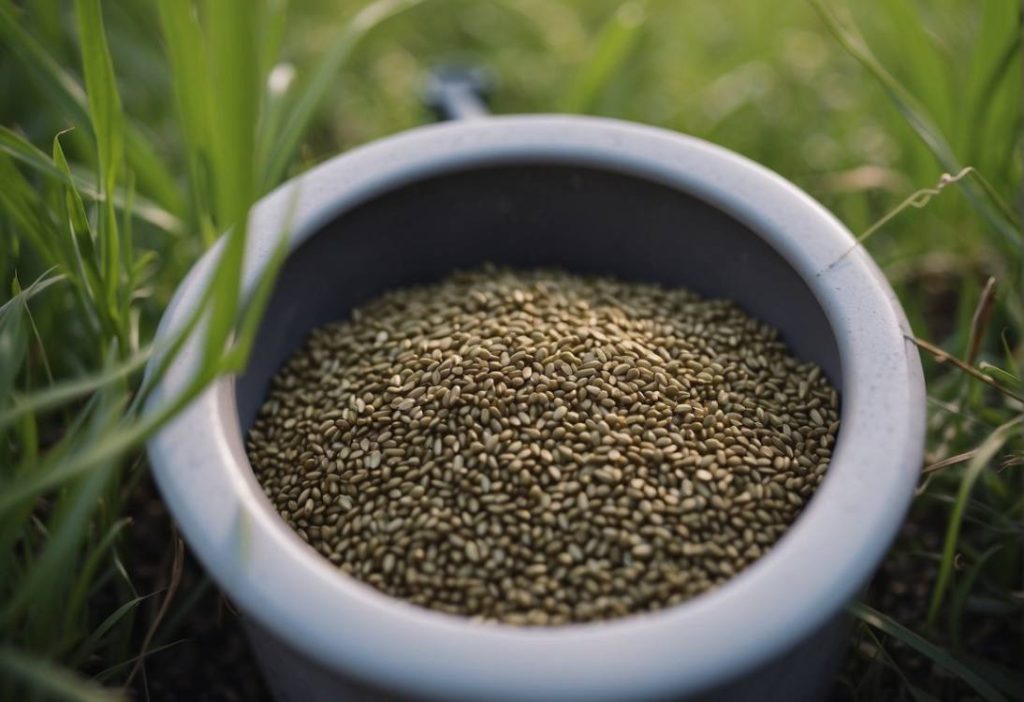
According to research, cat feces may contain a nasty parasite called Toxoplasma gondii, which can survive wastewater treatment and potentially harm marine life.
Here’s a startling fact: a study by the U.S. Environmental Protection Agency identified T. gondii in marine mammals, showing just how far these pathogens can travel.
Now, let’s chat about your pipes. You might think, “It’s just seeds, right?”
However, multiple case studies point out that grass seed litter expands and clumps, which can seriously clog plumbing over time.
For instance, a plumbing study in Baltimore found that grass seed litter contributed to a significant blockage in residential pipes.
Here are a few tips to keep your plumbing happy and healthy:
- Regular inspections: Keeping an eye on how things flow can prevent surprises.
- Avoidance: Simply use an alternative waste disposal method for litter.
Remember, flush-friendly litter may not be so friendly after all. Keep this info in mind the next time you consider flushing grass seed litter—it might just save you a call to the plumber!
Quick Recap
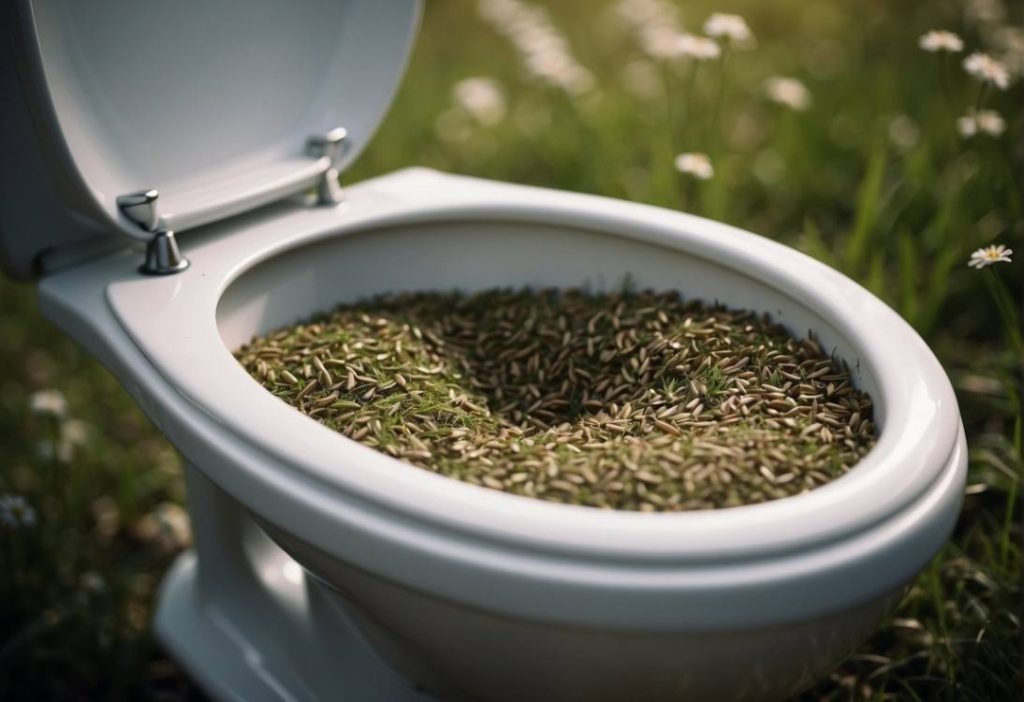
Flushability of Grass Seed Litter: You’ve probably wondered, “Can I just flush grass seed litter?” The simple answer is no. Flushing grass seed litter can lead to plumbing blockages and environmental harm.
What Should Cat Owners Know? Remember, your furball depends on you to make informed decisions! Here’s what you need to consider:
- Grass seed litter expands when wet.
- It can clog your pipes over time.
- Sewage systems aren’t designed for such material.
Responsibly Disposing of Grass Seed Litter: So, what are your options?
- Composting: A green thumbs-up if your local facility allows it.
- Trash: Place litter in biodegradable bags and bin it.
Environmentally Responsible Choices:
- Choose litter marked as eco-friendly.
- Reduce your footprint with sustainably sourced products.
Are you choosing wisely for the planet and your plumbing?
Frequently Asked Questions
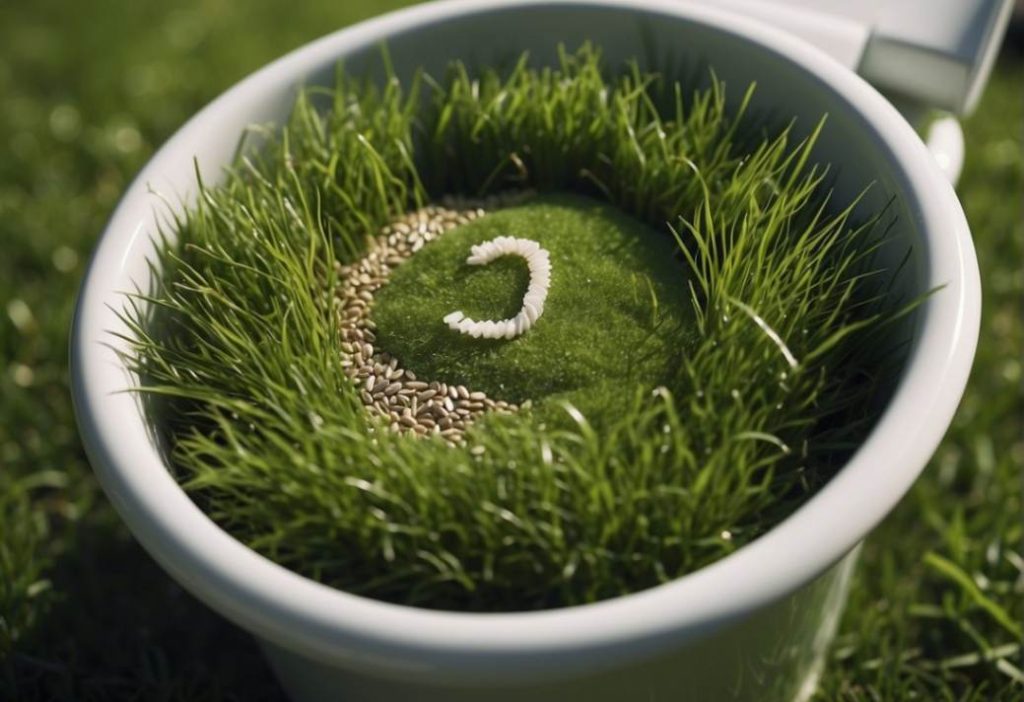
Is grass seed litter really flushable?
Yes, grass seed litter is typically marketed as flushable due to its ability to break down in water.
That said, it is always best to check the manufacturer’s instructions since not all plumbing systems can handle even the flushable varieties without issues.
What happens if I flush grass seed litter?
When flushed, grass seed litter is designed to disintegrate in water, potentially making it safer for sewer or septic systems compared to non-flushable alternatives.
However, frequent flushing might still contribute to blockages or impact sewage treatment processes.
What are the advantages and disadvantages of using flushable litter made from grass seed?
Advantages include the convenience of disposal and a potential waste reduction.
Disadvantages cover the risks of plumbing blockages and the environmental concerns associated with introducing any kind of litter into the water system.
What types of cat litter are considered safe to flush down the toilet?
Litters labeled as flushable, such as certain clumping, biodegradable types like grass seed, corn, or wheat-based litters, are generally deemed safe for flushing.
But remember, local regulations may advise against it, due to the risk to plumbing and aquatic ecosystems.
How does grass seed cat litter compare to other natural litter in terms of flushability?
Grass seed litter is comparable to other natural litters like corn and wheat when it comes to flushability.
They all break down easily in water. However, individual product formulations can vary, so results may differ brand by brand.
What should I do if my cat ingests some grass seed litter?
While grass seed litter is non-toxic, ingestion can lead to digestive discomfort or blockages.
If you notice your cat has ingested litter and shows signs of distress, contact your vet promptly.
Can flushing grass seed litter harm the environment?
Flushing grass seed litter, even if labeled as flushable, can introduce non-native materials into waterways, potentially impacting local ecosystems.
It’s also worth considering the litter’s entire lifecycle, from production to disposal, when assessing its environmental impact.

